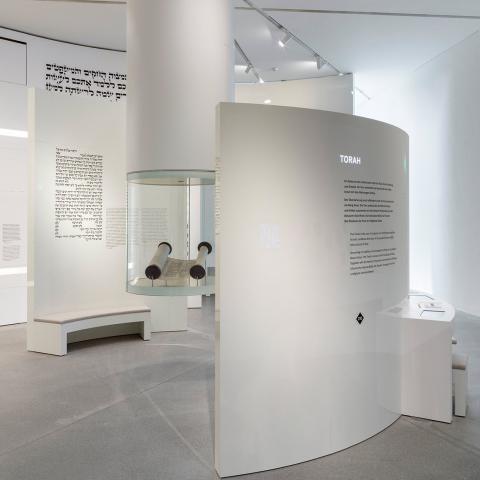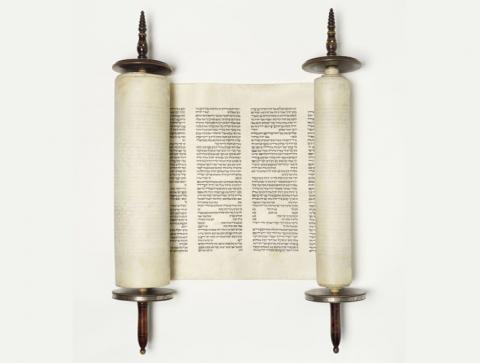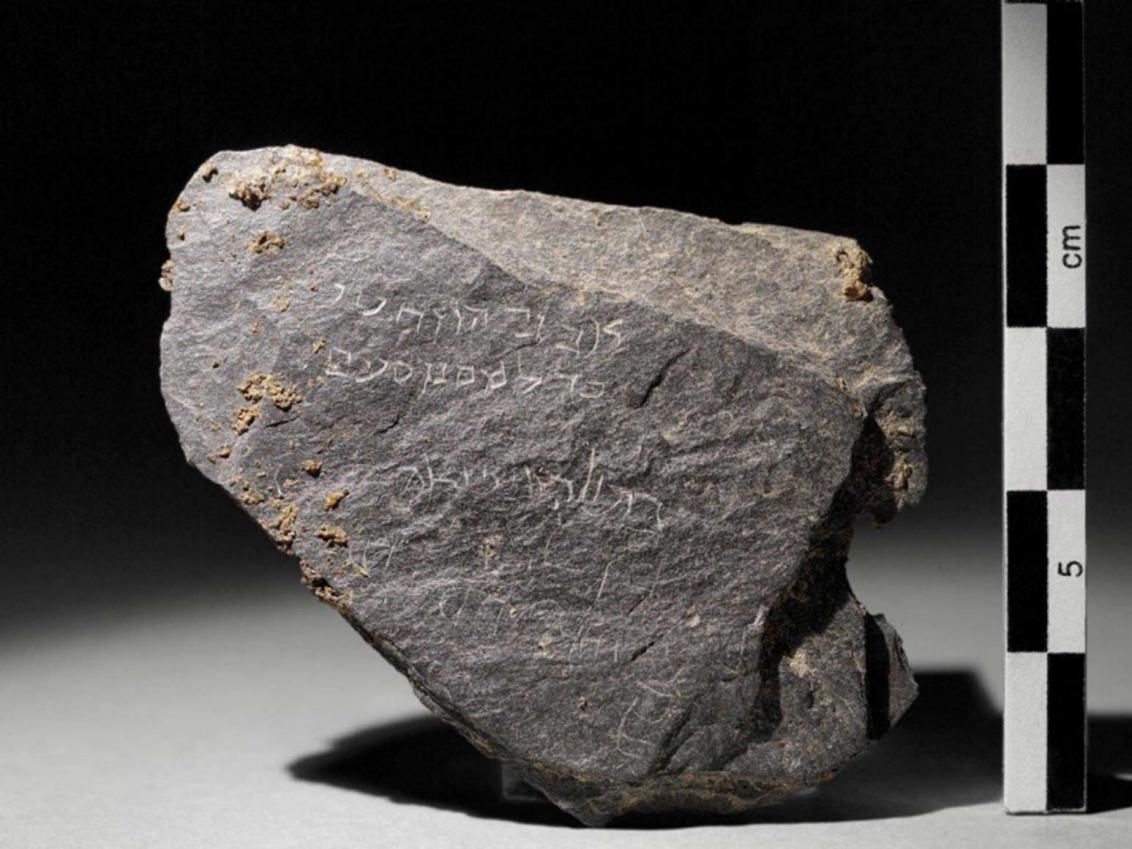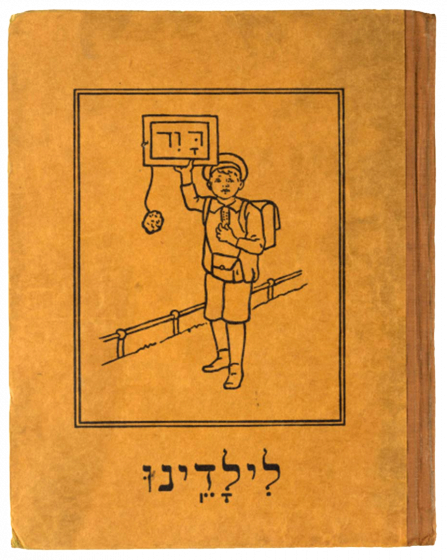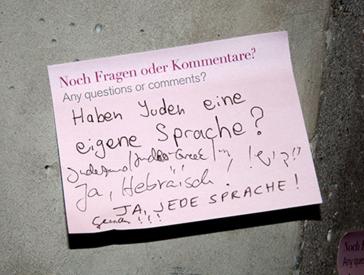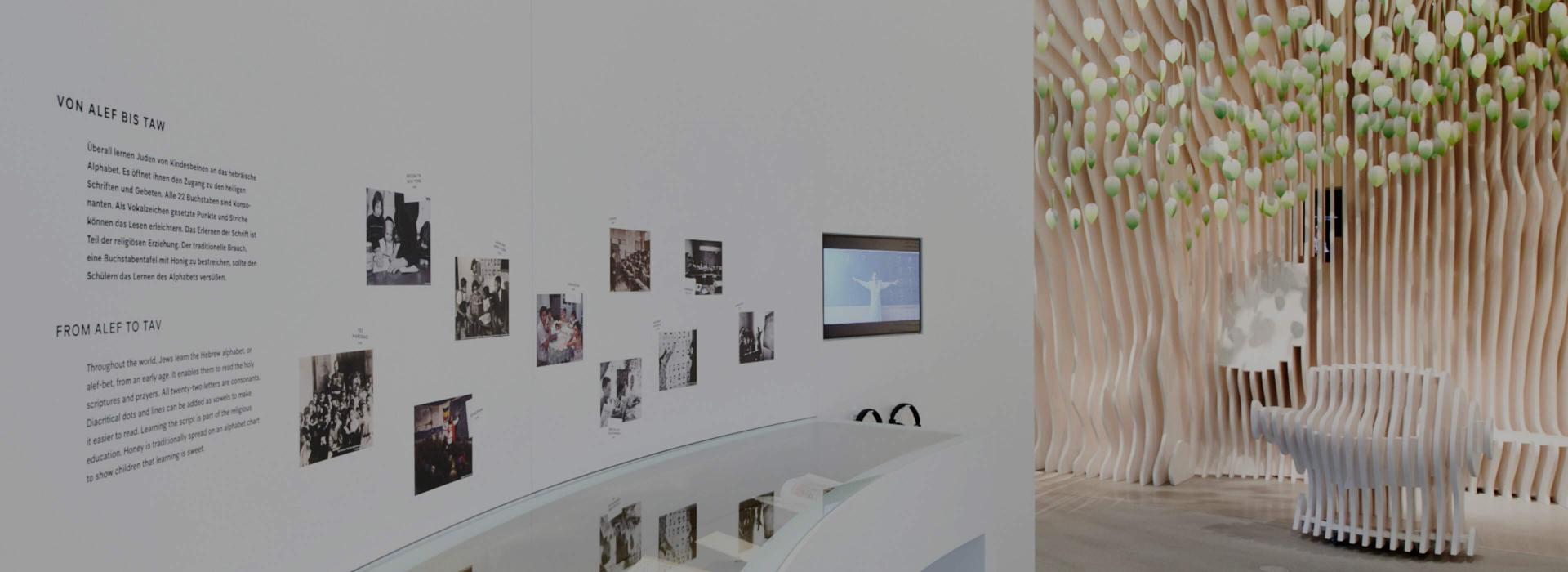
Thematic Space Torah
Words, Writing and Language in Our Core Exhibition
The Torah is Judaism’s most important text and the basis for religious practice throughout the world. The first room in our core exhibition is dedicated to it and a Torah scroll is centrally positioned in the room. In this room you can also learn about the Hebrew alphabet, Jewish languages of the Diaspora, and the concept of a genizah.
On this page, you will find the most important topics, as well as some audio clips and objects.
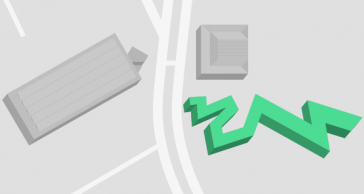
Where
Libeskind Building, level 2, permanent exhibition
Lindenstraße 9–14, 10969 Berlin
The Torah
The Torah is both narrative and law. Its text connects the history of the people of Israel with God’s directives. According to tradition, God revealed the Torah to his people on Mount Sinai.
The parashah, or the weekly portion of the Torah, is at the heart of prayer services. The text is divided into 54 segments that correspond to specific weeks, and it is read in full during the course of the year. Consequently, the Torah scroll is always rolled to the upcoming text passage, taken from the First to the Fifth Book of Moses. On Simhat Torah, literally “Rejoicing with the Torah,” the last chapter of the last Book and the first chapter of the first Book are read together.
A trained Torah scribe, a sofer, uses special ink and a quill to write on the parchment.
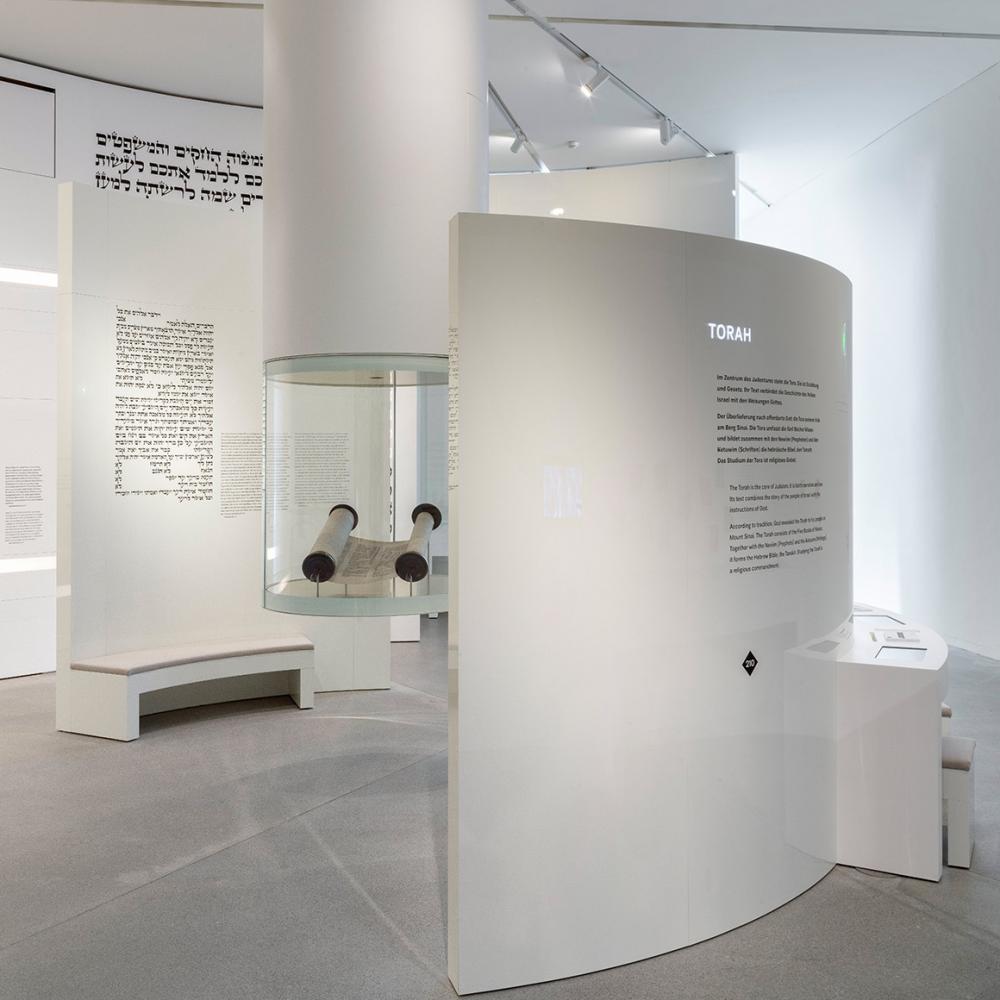
The exhibition’s layout references the shape of a Torah scroll; Jewish Museum Berlin, photo: Roman März
Paper Restorer Stephan Lohrengel Talks About the Torah Scroll of the Leavor Family,
Jewish Museum Berlin 2023
Each copy must be accurate and without errors. The writing of a Torah scroll is a sacred undertaking that ensures the text will be passed down faithfully to the next generation.
The Hebrew Alphabet
In order to read the Torah and the prayers, Jewish children learn the Aleph Bet. The Hebrew alphabet has twenty-two letters.
In the exhibition, you can write your name in Hebrew letters. A series of photographs shows different teaching and learning experiences from throughout the world. One display case contains educational materials, from a writing slate to a contemporary Hasidic reading primer.
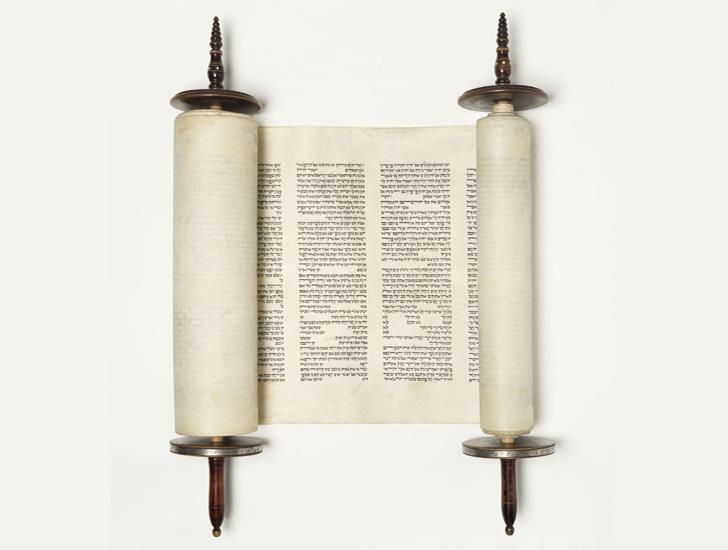
A Torah scroll, Hohensalza (Inowrocław) 1903; Jewish Museum Berlin, accession 2011/98/0, gift from the Leavor Family in honor of Dr. Hans and Louise Librowicz, photo: Roman März
Hebrew Lessons and Educational Materials

Students learn Hebrew in a classroom in Zimbabwe, c. 2005; Tobi Asmoucha Photography. The photo is part of an exhibited photography series showing Hebrew lessons around the world.
The video piece Aleph-Bet (Hoshana), 2015, by the Israeli artist Victoria Hanna, takes up religious traditions and melodies, connecting them with hip-hop beats, and reflects on role models. The traditional custom of coating an alphabet chart in honey is intended o sweeten the task of learning the alphabet for schoolchildren. . This video work can be seen in the exhibition room for Torah. It is on loan from the artist, with support from the Friends of the Jewish Museum Berlin.
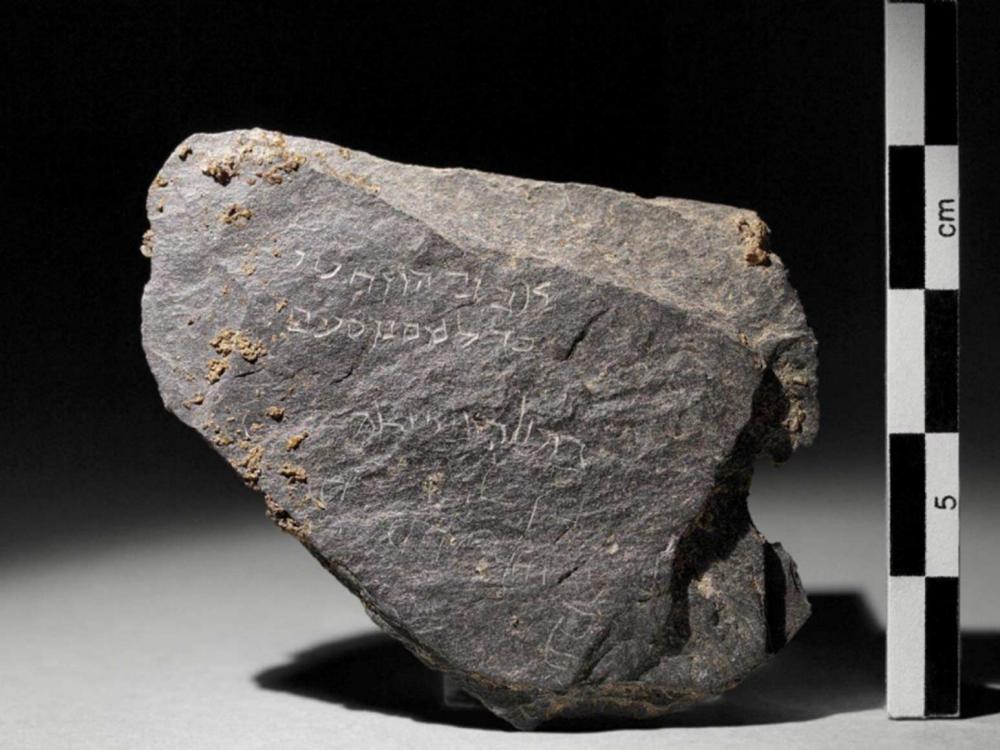
Numerous slate fragments were found during excavations in the medieval Jewish quarter in Cologne. Several bear writing and grammar exercises that document Hebrew language learning in the Middle Ages. Two names – Mordekhai and Josef – are written in Hebrew letters on this fragment.
Cologne, 1st half of the 14th century
Stadt Köln, Dezernat Kunst und Kultur VII-3, Archäologische Zone, Römisch-Germanisches Museum der Stadt Köln, photo: Christina Kohnen

Embroidered samplers featuring Hebrew letters are quite rare. Samplers like this one helped girls learn embroidery techniques that they would need in their future roles as housewives. All that is known about the previous owner of this sampler is her initials: J.A. She may have attended the Hamburg school for girls from poor Jewish families, founded in 1798.
Embroidery sampler, probably from Hamburg 1810, embroidered linen, silk; Jewish Museum Berlin, accession 2014/161/0, photo: Jens Ziehe.
Further information on this object can be found in our online collections (in German)
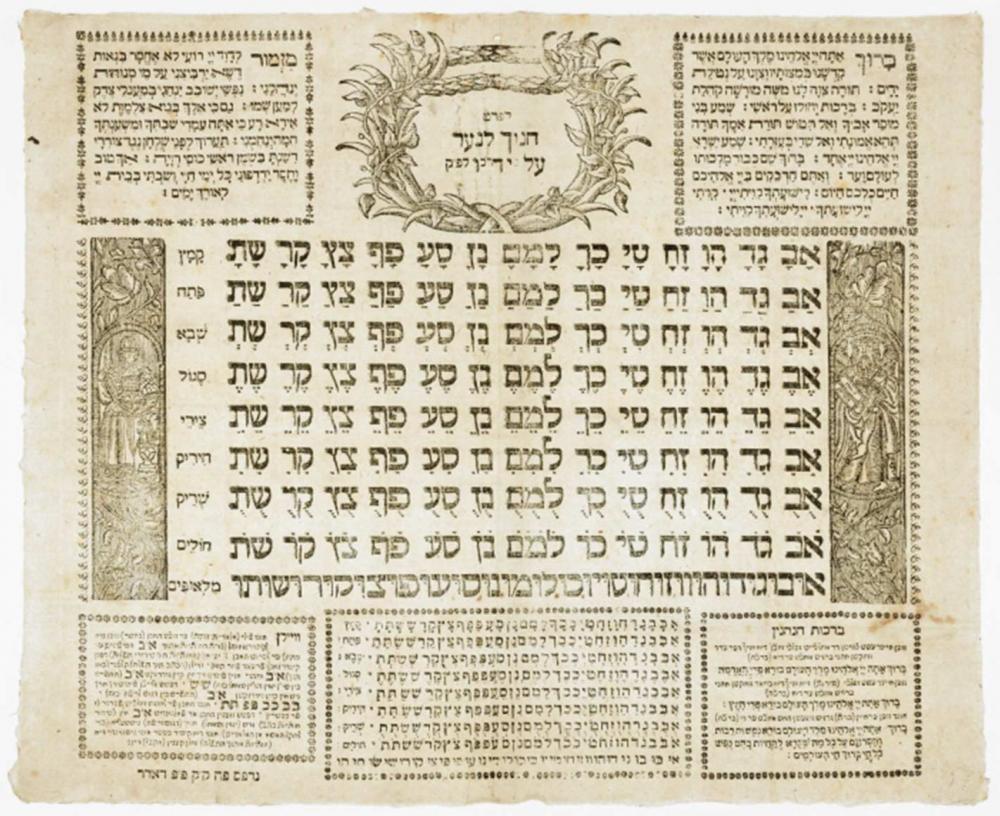
Hebrew letters with vowel points are displayed in the center of this decorative print. The alphabet is framed by blessings and verses. The print was intended to make learning easier for children, and on the bottom left, the manufacturer draws attention to its advantages in Yiddish. The woodcuts show Moses and Aaron.
Frankfurt (Oder), 1794; Jewish Museum Berlin, accession 2019/160/0, photo: Roman März
Further information on this object can be found in our online collections (in German)
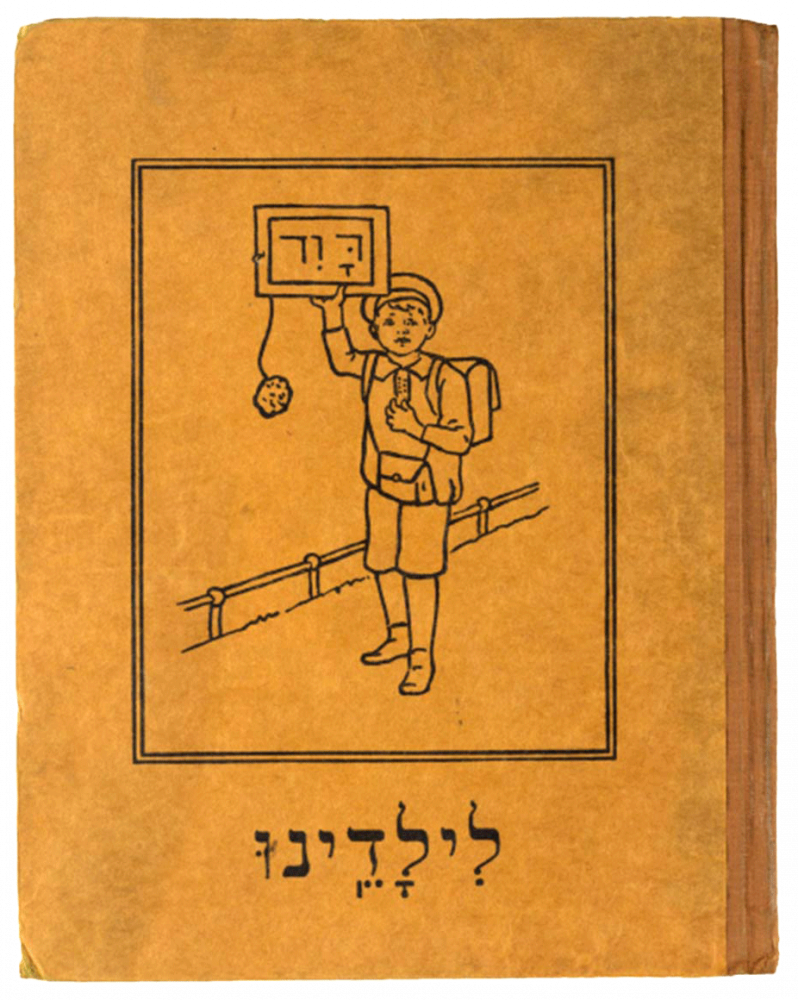
The illustrated New Hebrew Primer introduces children to the Hebrew alphabet. In addition to reading exercises, the book contains simple texts about Jewish holidays, the Torah, synagogue, and children’s everyday lives. Text: Abraham Michael, illustrations: Oscar Haberer, publisher: J. Kauffmann Verlag, Frankfurt am Main 1934; Jewish Museum Berlin, accession BIB/139789/0, photo: Roman März
Genizah – Sacred Remnants
A genizah is a final repository for texts and ceremonial objects. The Memmelsdorf Genizah (c. 1725–1830) is on display in our core exhibition. You can learn about it in more detail on our website.
Religious texts that are no longer usable are not thrown out but ritually buried or put into storage.
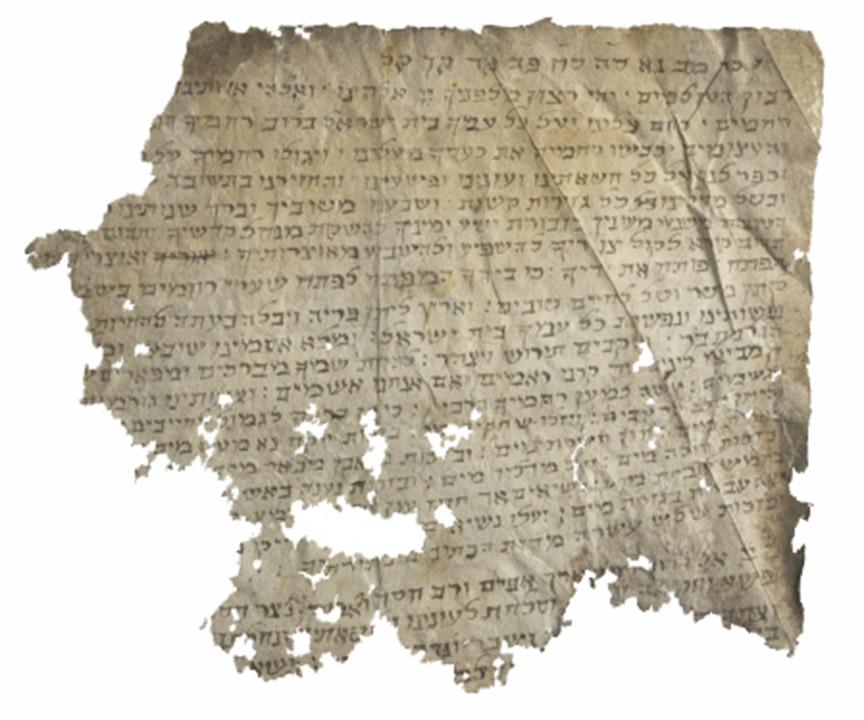
Prayer for rain, part of the Memmelsdorf Genizah, Memmelsdorf (discovery site), c. 1762–1830; Jewish Museum Berlin, accession 2003/131/26, photo: Roman März
Jewish Languages
Through contact with the surrounding cultures, Diaspora Jews developed Jewish languages that were mostly written with Hebrew letters. The most well-known are Yiddish, Judeo-Spanish (Ladino) and Judeo-Arabic.
In our core exhibition, an world map invites you to explore these languages through sound. The audio clips take you not only to Eastern Europe but also to Yemen and India.
In this episode of the RBB radio show “Zwei auf EINS” (Two to one) dedicated to the opening of the core exhibition, curator Tamar Lewinsky spoke with hosts Daniel Finger and Sven Oswald about Jewish languages; Jewish Museum Berlin, August 2020
Audio Clips of Various Jewish Languages
Speaking Ladino, Șeli Natan Gaon tells the story of her education in Istanbul (with subtitles in English and Ladino); Vanishing Languages and Cultural Heritage, 2019.
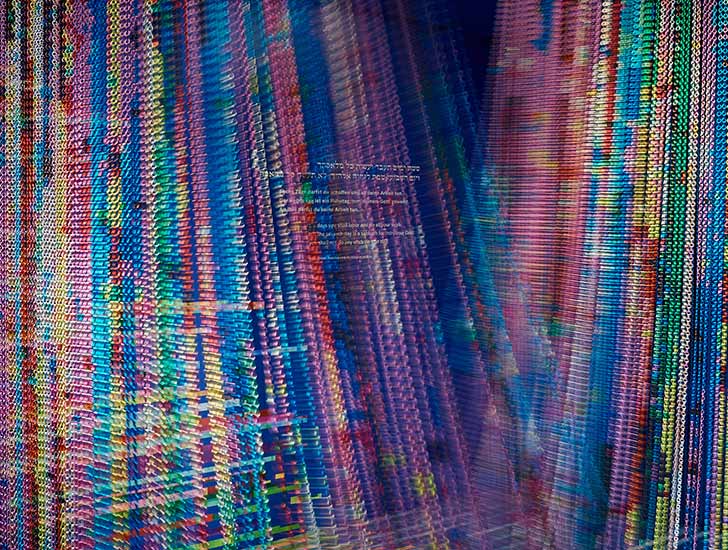
Exhibition Jewish Life in Germany: Past & Present: Features & Programs
- Exhibition Webpage
- Jewish Life in Germany: Past & Present: Core exhibition of the Jewish Museum Berlin, since Aug 2020
- Guided Tours
- JMB App: Audio guide, available in English, German, German plain language, German Sign Language, French, Italian, Spanish, Hebrew and Russian, available for download
- Guided Tours for Adults as Individual Visitors or in Groups: Fixed dates or by appointment, on site or digitally, in several languages
- Guided Tours and Workshops for School Groups: Appointment, on site or digitally, in several languages
- Publications
- The JMB Book: History, architecture and core exhibition of the museum, available in English, German, French, Spanish and Italian
- Open: JMB Journal #21, with interviews and background information on the exhibition
- Digital Content
- Current page: Thematic Space Torah: Audios and objects on words, writing and language
- Musicroom: Playlists with religious and secular music from the core exhibition
- Topography of Violence. Antisemitic violence in Germany 1930–1938: Media application from the exhibition’s historical chapter Catastrophe
- 13 Objects – 13 Stories: Unusual objects from our core exhibition
- New Accents: Interview with Cilly Kugelmann, chief curator of the core exhibition
- See also
- The Libeskind building
- History of the museum

